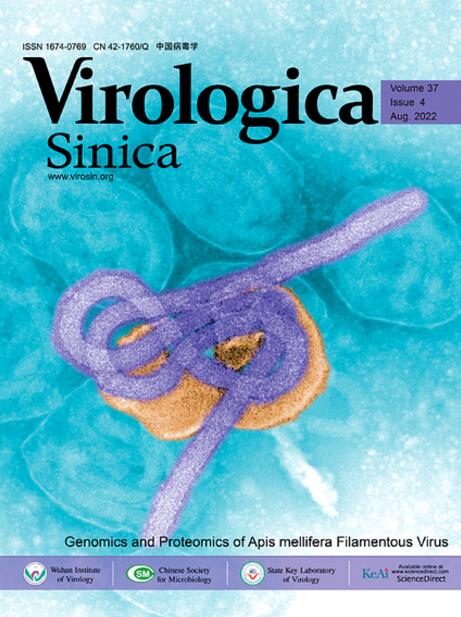Circulation patterns and molecular characteristics of respiratory syncytial virus among hospitalized children in Tianjin, China, before and during the COVID-19 pandemic (2017–2022)
IF 5.5
3区 医学
Q1 Medicine
引用次数: 0
Abstract
Respiratory syncytial virus (RSV) is the main pathogen that causes hospitalization for acute lower respiratory tract infections (ALRIs) in children. With the reopening of communities and schools, the resurgence of RSV in the COVID-19 post-pandemic era has become a major concern. To understand the circulation patterns and genotype variability of RSV in Tianjin before and during the COVID-19 pandemic, a total of 19,531 nasopharyngeal aspirate samples from hospitalized children in Tianjin from July 2017 to June 2022 were evaluated. Direct immunofluorescence and polymerase chain reaction (PCR) were used for screening RSV-positive samples and subtyping, respectively. Further analysis of mutations in the second hypervariable region (HVR2) of the G gene was performed through Sanger sequencing. Our results showed that 16.46% (3215/19,531) samples were RSV positive and a delayed increase in the RSV infection rates occurred in the winter season from December 2020 to February 2021, with the average RSV-positive rate of 35.77% (519/1451). The ON1, with H258Q and H266L substitutions, and the BA9, with T290I and T312I substitutions, are dominant strains that alternately circulate every 1–2 years in Tianjin, China, from July 2017 to June 2022. In addition, novel substitutions, such as N296Y, K221T, N230K, V251A in the BA9 genotype, and L226I in the ON1 genotype, emerged during the COVID-19 pandemic. Analysis of clinical characteristics indicated no significant differences between RSV-A and RSV-B groups. This study provides a theoretical basis for clinical prevention and treatment. However, further studies are needed to explore the regulatory mechanism of host immune responses to different lineages of ON1 and BA9 in the future.
COVID-19 流行前和流行期间(2017-2022 年)中国天津住院儿童呼吸道合胞病毒的流行模式和分子特征。
呼吸道合胞病毒(RSV)是导致儿童急性下呼吸道感染(ALRI)住院治疗的主要病原体。随着社区和学校的重新开放,RSV 在 COVID-19 后大流行时期的再次流行已成为人们关注的焦点。为了解COVID-19大流行之前和期间天津RSV的流行模式和基因型变异性,我们对2017年7月至2022年6月期间天津住院儿童的19531份鼻咽吸液样本进行了评估。直接免疫荧光和聚合酶链反应(PCR)分别用于筛查RSV阳性样本和亚型鉴定。通过桑格测序对 G 基因第二个超变区(HVR2)的突变进行了进一步分析。结果显示,16.46%(3 215/19 531)的样本为 RSV 阳性,在 2020 年 12 月至 2021 年 2 月的冬季,RSV 感染率出现延迟上升,平均 RSV 阳性率为 35.77%(519/1 451)。2017年7月至2022年6月,H258Q和H266L置换的ON1和T290I和T312I置换的BA9是中国天津每1-2年交替流行的优势毒株。此外,在COVID-19大流行期间,BA9基因型中出现了N296Y、K221T、N230K、V251A等新型替代基因,ON1基因型中出现了L226I。临床特征分析表明,RSV-A 组和 RSV-B 组之间没有明显差异。这项研究为临床预防和治疗提供了理论依据。不过,今后还需要进一步研究探讨宿主对ON1和BA9不同品系免疫反应的调节机制。
本文章由计算机程序翻译,如有差异,请以英文原文为准。
求助全文
约1分钟内获得全文
求助全文
来源期刊

Virologica Sinica
Biochemistry, Genetics and Molecular Biology-Molecular Medicine
CiteScore
7.70
自引率
1.80%
发文量
3149
期刊介绍:
Virologica Sinica is an international journal which aims at presenting the cutting-edge research on viruses all over the world. The journal publishes peer-reviewed original research articles, reviews, and letters to the editor, to encompass the latest developments in all branches of virology, including research on animal, plant and microbe viruses. The journal welcomes articles on virus discovery and characterization, viral epidemiology, viral pathogenesis, virus-host interaction, vaccine development, antiviral agents and therapies, and virus related bio-techniques. Virologica Sinica, the official journal of Chinese Society for Microbiology, will serve as a platform for the communication and exchange of academic information and ideas in an international context.
Electronic ISSN: 1995-820X; Print ISSN: 1674-0769
 求助内容:
求助内容: 应助结果提醒方式:
应助结果提醒方式:


